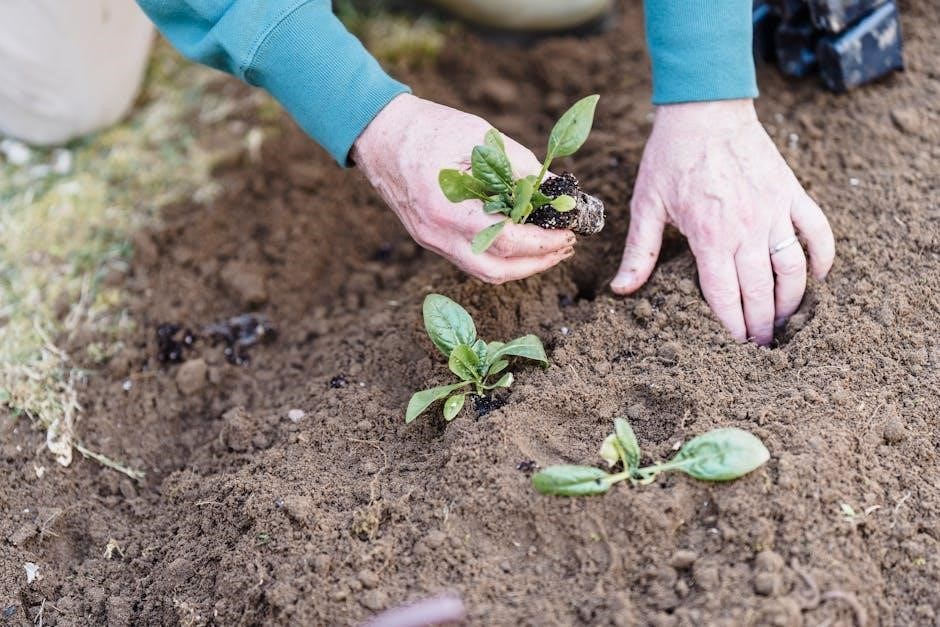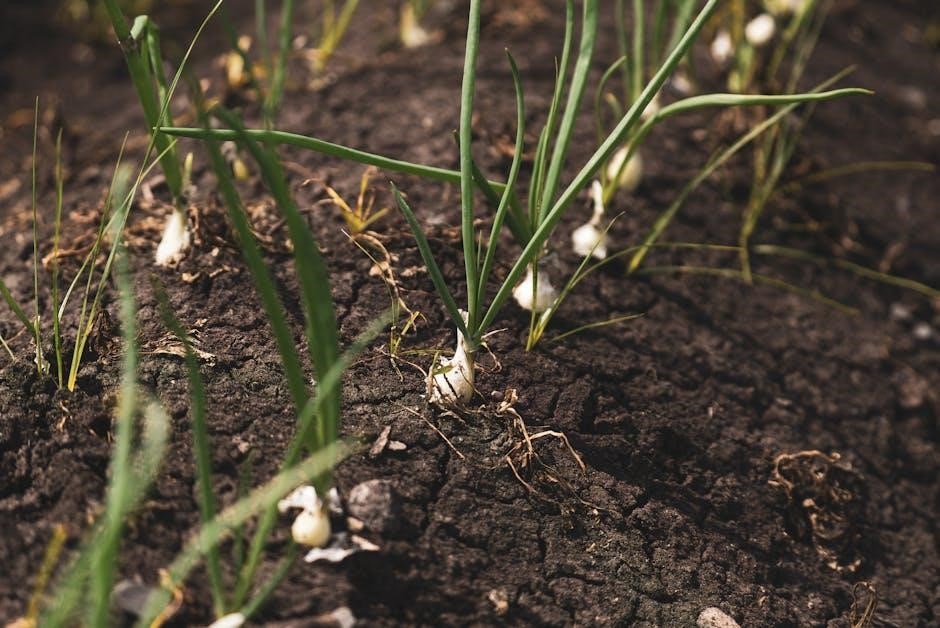Zone 9 has a long growing season with hot summers, making it ideal for planting various vegetables, herbs, and flowers, using a monthly planting calendar for guidance and success always.
Overview of Zone 9 Climate
Zone 9 is characterized by a long growing season with hot summers, making it an ideal location for planting a variety of vegetables, herbs, and flowers. The climate in this zone is generally warm, with mild winters and extremely hot summers. This allows for multiple harvests and a wide range of planting options. The temperature in Zone 9 rarely drops below freezing, and the average temperature is around 70-80 degrees Fahrenheit during the summer months. The region’s climate is also influenced by its proximity to the ocean, which helps to moderate the temperature and provide a longer growing season. Understanding the climate in Zone 9 is essential for creating a successful vegetable planting guide, as it allows gardeners to choose the right plants and plan their planting schedule accordingly. By taking into account the unique characteristics of the Zone 9 climate, gardeners can create a thriving and productive garden.
Importance of Timing in Gardening
Timing is crucial in gardening, as it can significantly impact the success of a vegetable garden. Planting at the right time allows seeds to germinate and grow optimally, while poor timing can lead to reduced yields or even crop failure. In Zone 9, the long growing season and hot summers require gardeners to carefully plan their planting schedule. Planting too early or too late can expose plants to extreme temperatures, pests, or diseases, reducing their chances of survival. A well-planned gardening schedule takes into account factors such as weather patterns, soil temperature, and daylight hours to ensure that plants receive the optimal conditions for growth. By understanding the importance of timing, gardeners can create a thriving and productive garden, and make the most of the Zone 9 climate. Effective timing also helps to minimize waste and reduce the need for pesticides and other chemicals, making gardening a more sustainable and enjoyable experience.

Understanding Cool-Season and Warm-Season Crops
Crops are classified as cool-season or warm-season, requiring specific temperature conditions to thrive in Zone 9 gardens always.
Cool-Season Crops
Cool-season crops are plants that thrive in the cooler temperatures of spring or fall, making them ideal for Zone 9 gardens during these periods. These crops include vegetables such as broccoli, cauliflower, and kale, which can tolerate light frosts and prefer the cooler temperatures. In Zone 9, cool-season crops can be planted in early spring or late summer to early fall, allowing them to mature before the hot summer weather or cold winter weather sets in. By planting cool-season crops at the right time, gardeners can enjoy a bountiful harvest of fresh, delicious vegetables. Using a monthly planting calendar can help gardeners determine the best times to plant cool-season crops in their area, ensuring a successful and productive garden. With proper planning and care, cool-season crops can be a rewarding and enjoyable addition to any Zone 9 garden, providing a variety of nutritious and flavorful vegetables.
Warm-Season Crops
Warm-season crops are plants that thrive in the warm temperatures of summer, making them ideal for Zone 9 gardens during this time. These crops include vegetables such as tomatoes, peppers, and eggplants, which prefer the heat and can tolerate high temperatures. In Zone 9, warm-season crops can be planted in late spring to early summer, allowing them to mature during the warmest months. Using a planting calendar can help gardeners determine the best times to plant warm-season crops in their area, ensuring a successful and productive garden. Warm-season crops require full sun and well-draining soil to grow, and they can be started from seeds or transplants. With proper care and attention, warm-season crops can provide a bountiful harvest of fresh, delicious vegetables, and can be a rewarding addition to any Zone 9 garden, offering a variety of nutritious and flavorful options for gardeners to enjoy. Gardeners can also try planting different varieties of warm-season crops to extend the harvest season.

Planting Calendar for Zone 9
Using a monthly planting calendar helps gardeners in Zone 9 plan and organize their vegetable garden effectively always.

Monthly Planting Guide
A monthly planting guide is essential for gardeners in Zone 9, as it provides a detailed schedule of what to plant each month. This guide takes into account the region’s hot summers and mild winters, allowing gardeners to make the most of their growing season. By following a monthly planting guide, gardeners can ensure that their vegetables, herbs, and flowers are planted at the optimal time, giving them the best chance of success; The guide typically includes information on which specific plants to sow, transplant, or harvest each month, as well as tips on how to care for them. With a monthly planting guide, gardeners in Zone 9 can plan and organize their garden with confidence, knowing that they are giving their plants the best possible start in life. This guide is a valuable resource for both experienced and novice gardeners, helping them to achieve a thriving and productive garden.
Planting Tomatoes, Peppers, and Other Vegetables
Planting tomatoes, peppers, and other vegetables in Zone 9 requires careful consideration of the region’s climate and soil conditions. Tomatoes and peppers are warm-season crops that thrive in Zone 9’s hot summers, and can be planted in late spring to early summer. Other vegetables, such as cucumbers, squash, and okra, also do well in Zone 9’s warm weather. When planting these vegetables, it’s essential to choose varieties that are resistant to heat and drought, and to provide them with adequate support and care. A well-draining soil and full sun are also crucial for the success of these plants. By following specific planting instructions and tips, gardeners in Zone 9 can enjoy a bountiful harvest of delicious and healthy vegetables. With proper care and attention, these plants can thrive in Zone 9’s climate, providing a rewarding and productive gardening experience. Regular watering and fertilization are also necessary to promote healthy growth and fruit production.

Preparing Your Garden
Prepare your garden with a good plan and necessary tools for a successful harvest always.
Starting a Garden from Scratch
Starting a garden from scratch can be a daunting task, especially for those new to gardening. A well-planned garden begins with a clear understanding of the space and resources available. Consider the amount of sunlight, soil type, and water accessibility when selecting a location for the garden. It is essential to choose a spot that receives the right amount of sunlight for the plants, as this will affect their growth and productivity. Using a monthly planting calendar can help guide the process, ensuring that the right plants are planted at the right time. With careful planning and preparation, a successful and thriving garden can be achieved, providing a bountiful harvest and a sense of accomplishment. By following a few simple steps and considering the specific needs of the garden, anyone can start a garden from scratch and enjoy the many benefits it has to offer, including fresh produce and a connection to nature.
Raising Plants at Home
Raising plants at home can be a rewarding experience, allowing individuals to have control over the growing process and enjoy the benefits of homegrown produce. Using a no dig approach can be advantageous, as it reduces soil disturbance and preserves soil health. This method involves adding a layer of organic matter to the soil surface, which helps to retain moisture and suppress weeds. By raising plants at home, individuals can also ensure that their plants are free from pesticides and other chemicals, making them a healthier option. With the right techniques and materials, anyone can successfully raise plants at home, regardless of their level of gardening experience. A step-by-step guide can provide valuable advice and tips on how to raise plants at home, from sowing seeds to harvesting crops, and can help individuals to achieve a successful and thriving garden. Proper care and attention are essential for raising healthy plants.